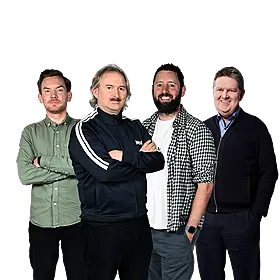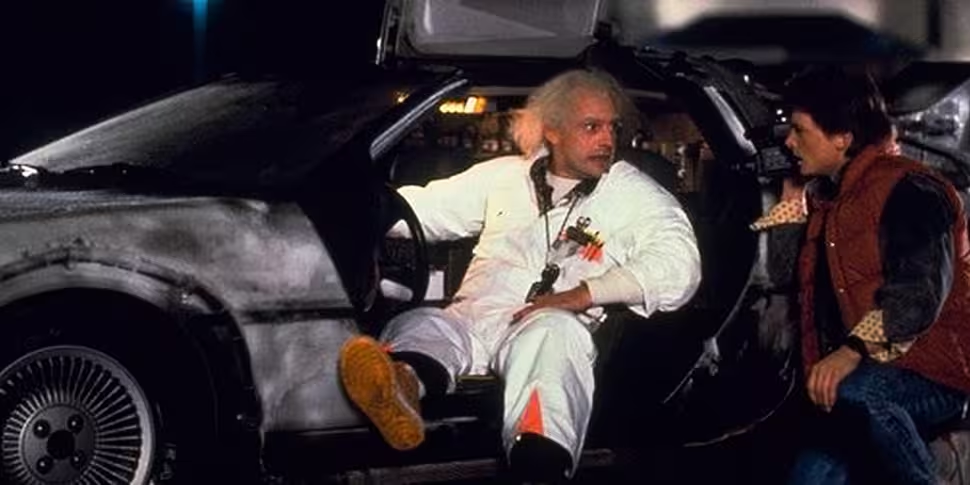Once dubbed the ‘Detroit dream merchant,’ the nightmare of his foray into the automobile industry came to hasty end when DeLorean was detained for staking $1.8m of his dwindling fortune against 100kg of cocaine. Had the deal been real, DeLorean looked set to pocket $24m from smuggling the white stuff into the US, a fortune he had hoped to pour back into beleaguered car empire. Had he not blown it, we might still be driving the car that bore his name and charmed millions of people around world when it whipped Marty McFly and Doc Brown to the past and back to the future whenever it hit 88m/ph on the speedometer.
John Zachary DeLorean had motor oil in his blood. His father had worked in a Ford factory and he had been raised in Detroit, America’s motor city, born during the grip of the Great Depression. A maths whizz, he showed great promise in school, and would go on to earn engineering degrees, working for two of the heavyweights of the American automotive industry, Chrysler and General Motors. In GM he quickly rose through the ranks, garnering attention – and making enemies – when he unveiled his designs for the Pontiac GTO, one of the quintessential ‘hot rods’ of the 60s. The car sold a staggering 250,000 in its first five years, earning him an executive parking space as the head of North American operations, and the salary to boot.
Success, as far as DeLorean was concerned, became him, and others looked on in increasing dismay. With his expensive threads and untamed sideburns, his colleagues thought he swaggered around the factory, his vanity only outmatched by his ego. Following the dissolution of his second marriage, he became something of a celebrity playboy, courting supermodels and actresses, and was linked to Ursula Andress and Raquel Welch. The turning point came when he met Christina Ferrare, a model half his age, who moved in.
The legend goes that GM executives didn't much care for his lifestyle, so DeLorean fired himself, walking off with a grudge and ambitions to break the company's iron-fisted hold over the American motor industry. The DMC-12, the car with the gull-wing doors that helped Marty McFly escape from Libyan terrorists only to enter into a very literal existential crisis of oedipal proportions, was, DeLorean believed, going to change the world.

Back to the Future cast members Lea Thompson, Christopher Lloyd, Mary Steenburgen, Michael J. Fox, director Robert Zemeckis , and Huey Lewis pose with a DeLorean DMC-12 in New York (AP Photo/Richard Drew)
Starting a business costs money. Usurping a long-establish industry as a bratty upstart takes a miracle. DeLorean had neither. But he did have celebrity.
To get the $175m he would need to produce the DMC-12, he first went after investors, raking in more than $12m from the likes of Sammy Davis Jr and Johnny Carson. Added to the pot was a hefty $156m secured from her Majesty’s treasury, in a number of loans and grants offer by the British government to DeLorean in return for locating his factory in Dunmurry, Co Antrim. Very little came from his own bank account, just more than half a million at an estimate.
To the clamouring media and a huntry public, DeLorean was the embodiment of the American dream; from nothing, the factory-worker’s son who’d lived through the depression was mounting a challenge to the automotive big wheels, earning millions and living lavishly in a 20-room duplex on Fifth Avenue, with million-dollar estates in New Jersey and California. DMC’s office space, costing $25,000 every month, was in one of Manhattan’s skyscrapers, from which he could rival GM’s monolithic tower block nearby.
If only the public’s interest in the cars had been as piqued as the interest in DeLorean’s lifestyle.
From its 1981 launch, sales were disappointing, with the DeLorean failing to gain traction. Costing $26,000, it was more expensive than most of its American competitors, and rivals Mazda and Porsche grabbed more of the recessionary market share than DMC could have anticipated. The company had hoped to ship 12,000 in the first twelve months. After half a year, only 3,000 had been sold.
In February, 1982, DMC’s factory in Northern Ireland went into receivership, and by October the British government called it a day, adding 2,000 more people to growing unemployment rate.
Desperate and derided by the media that once celebrated his playboy lifestyle, DeLorean needed to raise cash quickly if he was to stand any chance of saving DMC. He became involved in a drug-smuggling scheme to import cocaine from Colombia – and right into the middle of a sprawling law-enforcement sting set up to nail down a drug runner named William Hetrick.
On three separate occasions he was recorded by authorities meeting an informant in hotels across the US. When Hetrick swapped the drugs for the money, both men were arrested. The story goes that as DeLorean was being taken away into police custody, his telephone rang off the hook, the motoring mogul missing a call from a banker who was ready to loan him $200m, which would have saved DMC. Instead, the car company that hoped to revolutionise the world folded for good, with debts of $180m.
Conspiracy theories surrounded his rags-to-riches-to-rags story, many of them fuelled by DeLorean himself. He claimed he was a patsy, unaware that a loan he was trying to secure had any involvement in the narcotics trade, and that when he did finally figure it out, he fear for the lives of his family members should he try to back out of the deal. He also made wild claims the Big Three (Chrysler, Ford, and General Motors) had worked with US officials to undermine him. If it wasn’t them, then it was the British government, or the IRA. Or both.
In 1984, just as pre-production on Back to the Future was affixing a flux capacitor to the dashboard of his car, a federal judge exonerated DeLorean of all charges, claiming he was the victim of FBI entrapment. But that victory was the beginning of successive brushes with the legal system that left him owing millions to his investors, and millions more to his lawyers.
DeLorean wrote to Bob Gale and Robert Zemeckis to thank them for using his car in their movies. That decision had come about simply because of a plot device – they needed a car that would have looked like a UFO to people in 1955. It is arguably one of the most iconic movie cars in cinema history, its name known by millions of people around the world.
As for John DeLorean, he died a bankrupt born-again Christian in 2005. The DMC-12, his revolutionary vehicle, is with him in his final resting place, not far from Detroit.

John DeLorean's gravestone in Troy, Michigan [Chromjuwelen]
The Pop Shot is a weekly segment dedicated to bringing Newstalk's George Hook up to date with the modern world of pop culture. You can listen back to last Friday's Back to the Future special below:









